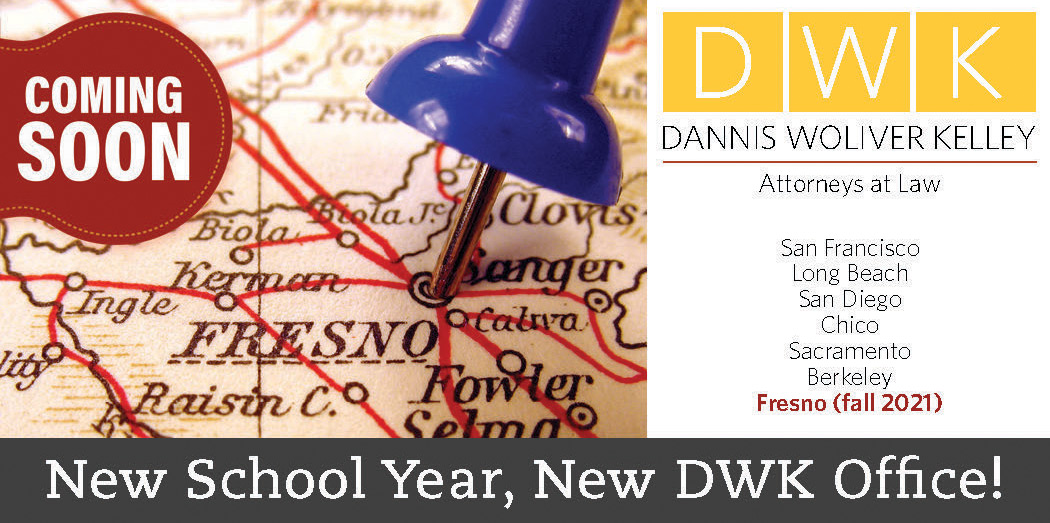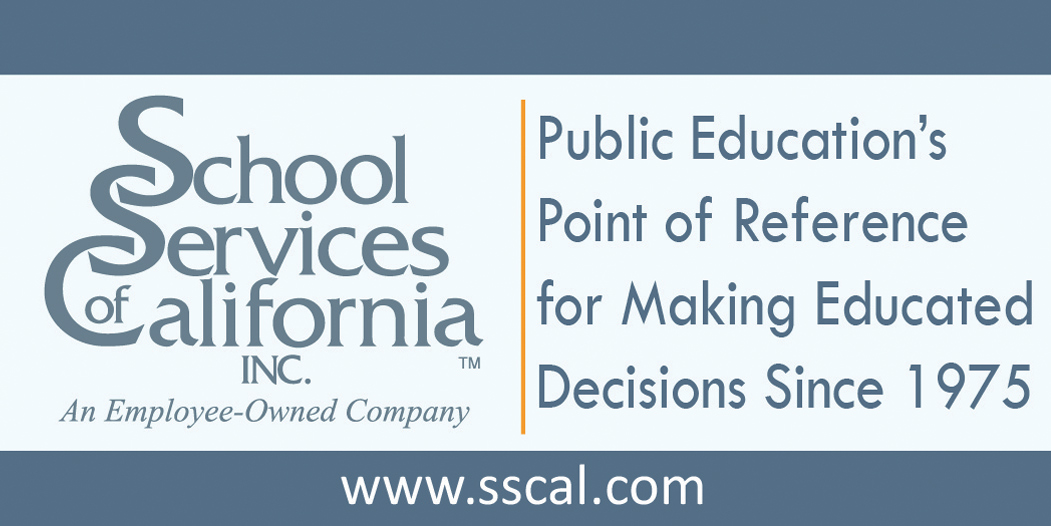A major disappointment for schools was Gov. Gavin Newsom’s approval of Assembly Bill 438. Authored by Assemblymember Eloise Gómez Reyes (D-San Bernardino), this new law will expand the March 15 certificated layoff deadline to include classified employees. CSBA took an Oppose position on the bill, and members raised their concerns about being forced to commit to labor costs without knowing their full budget with their representatives at Legislative Action Week in March. When the bill reached the Governor’s desk in September, nearly 450 local governance leaders wrote to the to warn him that doubling down on the March 15 deadline would increase instability for their schools and students. Despite these efforts, Gov. Newsom signed the bill on Oct. 8.
COVID-19


A September publication from the Alliance for Children’s Rights, “Best Practices Guide for Developing a District System to Improve Education Outcomes for Youth in Foster Care,” includes guidance for creating districtwide systems to consistently implement the education rights of youth in foster care.
Foster youth in California have the poorest outcomes of any student group. According to the California Department of Education, 58.2 percent of youth in foster care graduated in 2019–20 compared to 84.3 percent of students overall; 24 percent of youth in foster care met Smarter Balanced English language art standards compared to 51 percent of students overall; and just 15 percent of youth in foster care met the math standards compared to 40 percent of the general student population.

Troy Flint | tflint@csba.org
Managing Editor:
Kimberly Sellery | ksellery@csba.org
Marketing Director:
Andy Rolleri | arolleri@csba.org
Staff Writers and Contributors:
Alisha Kirby | akirby@csba.org
Heather Kemp | hkemp@csba.org
Mike Ambrose | mambrose@csba.org
Graphic Design Manager:
Kerry Macklin | kmacklin@csba.org
Senior Graphic Designer:
Mauricio Miranda | mmiranda@csba.org
Dr. Susan Heredia | Natomas USD
President-elect:
Vacant
Vice President:
Susan Markarian | Pacific Union ESD
Immediate Past President:
Xilonin Cruz-Gonzalez | Azusa USD
CEO & Executive Director:
Vernon M. Billy
California School News (ISSN 1091-1715) is published 11 times per year by the California School Boards Association, Inc., 3251 Beacon Blvd., West Sacramento, CA 95691. 916-371-4691. $4 of CSBA annual membership dues is for the subscription to California School News. The subscription rate for each CSBA nonmember is $35. Periodicals postage paid at West Sacramento, CA and at additional mailing office. POSTMASTER: Send address changes to California School News, 3251 Beacon Blvd., West Sacramento, CA 95691.
News and feature items submitted for publication are edited for style and space as necessary.

It was also a year where, in May, CSBA suffered the loss of a strong and empathetic leader in CSBA President Suzanne Kitchens. Suzanne was full of the curiosity, joy and passion we hope to nurture in all California students. She was calm, wise, patient and welcoming. And when it came to decisions that would affect the students in her district, she was a deep thinker who understood the importance of stakeholder input and reflecting on different viewpoints to come to a decision that was best for all students.

Officials expect the COVID vaccine to get full approval for youth ages 12-15 by January. Once that happens, the vaccination will be added to the school vaccine requirement list for grades 7-12 effective July 1, 2022, affecting the 2022–23 school year. If the vaccine is approved before January, students will be required to get the vaccine sooner, Newsom added. A state vaccination requirement for ages 5-11 will not be made until there is full FDA approval for the group and after the vaccine goes through the administrative rulemaking process.
“Going to local public schools was always a challenge for myself and others because of the lack of knowledge of the true history and culture of the Californian people, let alone Serrano and Cahuilla people,” Ramos said. “The schools then would still try to pan-Americanize the whole approach to the Native American culture. It was trying to fit everybody into one type of stereotype — all Indians lived in teepees, all Indians use drums and all Indians spoke the same language, when that wasn’t really the case, and it still is not the case here today.”
The issue stems from two factors, according to authors of the report: how district boundaries are drawn and where accessible housing is located. Lower-income families are often clustered into districts separate from wealthier families as a result of this combination even after taking into consideration current state and federal funding programs designed to equalize opportunity in both education and housing.

State and federal requirements for recording and updating student gender
California’s Gender Recognition Act added a “nonbinary” category
CSBA recently received questions regarding the obligations of school districts under California’s Gender Recognition Act (Senate Bill 179), as it may impact the designation of a student’s gender in student records maintained by local educational agencies. In response, board members were directed to the guidance issued in 2019 by the California Department of Education relative to the designation of a student’s gender in the California Longitudinal Pupil Achievement Data System (CALPADS), and its 2016 guidance regarding how LEAs should respond to student requests to change their gender identity in their student records.
Effective Sept. 1, 2018, the Gender Recognition Act added “nonbinary” as a gender designation that may be recorded on several identity documents including California driver’s licenses, identification cards and birth certificates. The Gender Recognition Act found that “[t]he binary gender designations of female and male fail to adequately represent the diversity of human experience.” The act described the term “nonbinary” as “an umbrella term for people with gender identities that fall somewhere outside of the traditional conceptions of strictly either female or male.”

Following unprecedented investments in early childhood education from the state, and with the Master Plan for Early Learning and Care in play, there is an increasing demand for qualified TK and preK teachers. Estimated teacher shortages for the positions required to implement universal TK alone could be as high as 10,000 teachers, according to a Center for the Study of Child Care Employment report.

California has a new literacy goal for its students: By 2026, every child will learn to read by third grade.
State Superintendent of Public Instruction Tony Thurmond was joined by various California education leaders in September to announce the new literacy initiative. “We already know that when students learn to read, they can read to learn anything — that this is gateway skill that can carry them to any point in their life and their career,” he said. “We also know that when students don’t learn to read by third grade, they are at greater risk of dropping out of school and they are at greater risk to end up in the criminal justice system.”
Speakers from the Assembly, California Teachers Association, National Center for Urban School Transformation, Early Edge, Education Trust-West, California Collaborative for Educational Excellence and Attendance Works spoke at the event, often sharing personal stories of struggle that education helped them to overcome.

The Center for Democracy & Technology released a pair of reports in September detailing the use of online monitoring software that can track student activity on devices like laptops or tablets. During the pandemic, K-12 schools moved quickly to provide devices to students to address inequities in technology access. Digital tools to facilitate remote classroom management or monitor for bullying, self-harm or inappropriate content were included on school-issued laptops and tablets, but so was monitoring software programs that researchers say are unduly intrusive and raise red flags for student equity and privacy protection.
The California Department of Education recently released guidelines to support local educational agencies grappling with an uptick in student misbehavior. After more than a year of social isolation and trauma, teachers, education officials and student advocates have speculated that students are returning to campus with underlying mental health challenges that may result in behavioral issues.
This is likely to be especially true among students most impacted by the pandemic — low-income youth, students with disabilities, Black and Latino students in particular — who have historically also been those most impacted by exclusionary discipline policies in school.
While 10 percent of California’s job market is in the tech sector, only five percent of California high school students are enrolled in computer science courses. The issue is compounded in rural areas and low-income communities: rural schools are half as likely to offer CS courses as urban schools, while those serving low-income communities are three times less likely to offer core CS courses than schools serving higher-income communities. Computer science teaching and learning is happening in every county in California, but there is a lot of work to do to ensure that it is happening equitably.
In light of this data, the California County Boards of Education adopted a statement to signal its commitment at the national CSforAll Summit on Oct. 19:
“The California County Boards of Education commits to building an online toolkit to support California counties and school districts working toward equitable computer science implementation, dedicating a track at our 2021 Annual Conference to equity in computer science education, and sponsoring a CS Helpdesk to provide advice to county administrators on curriculum, instruction, implementation and policy.”
2021 Virtual Annual Education Conference and Trade Show
2021 Annual Education Conference and Trade Show








